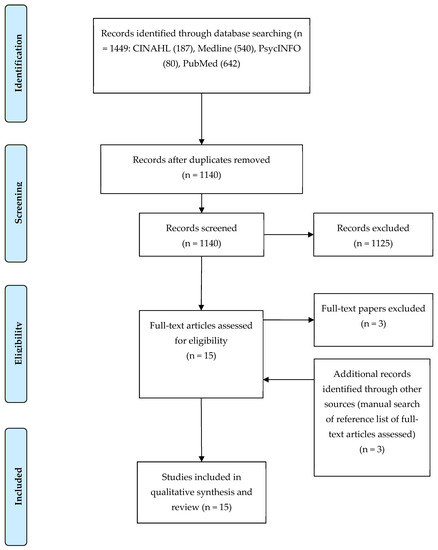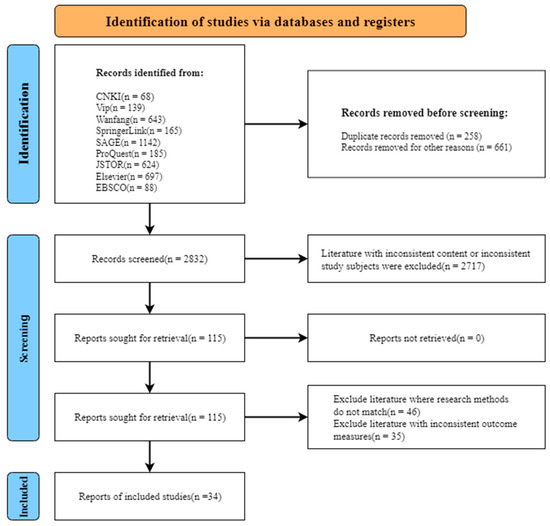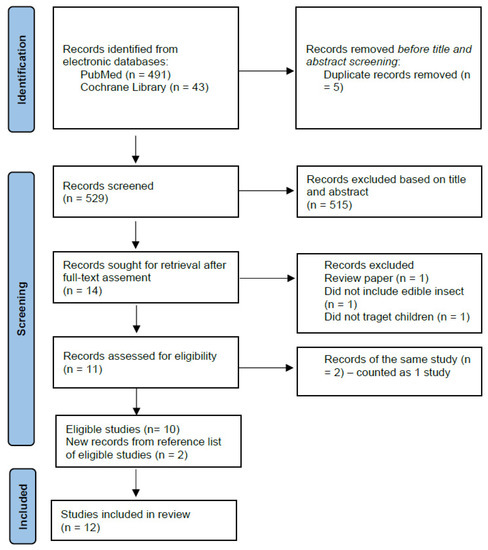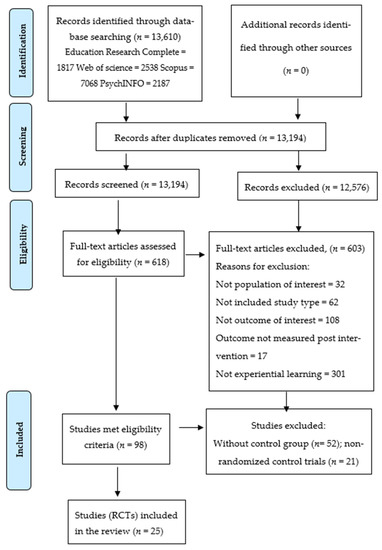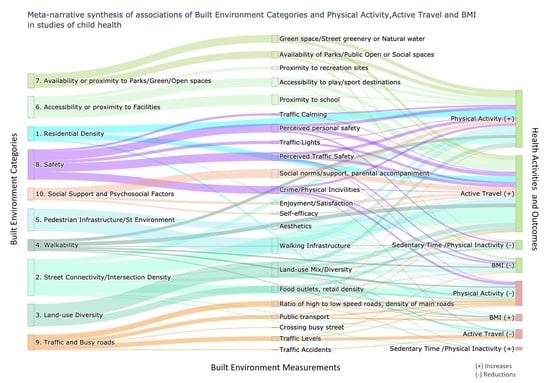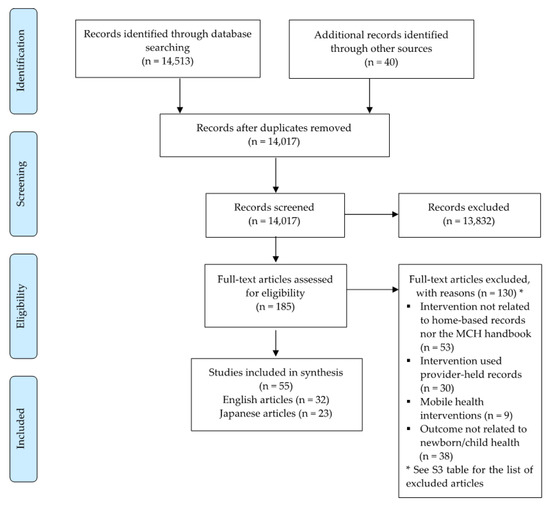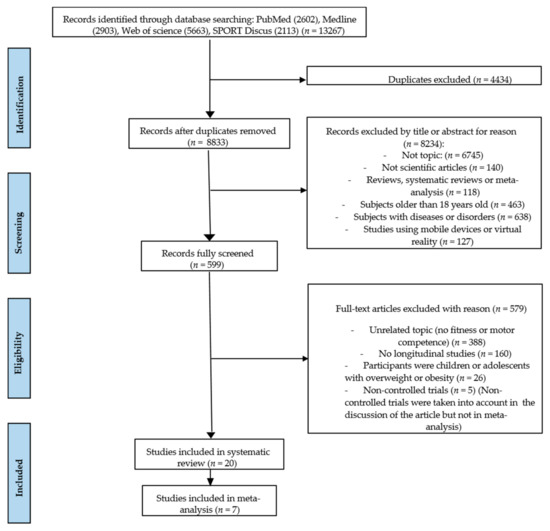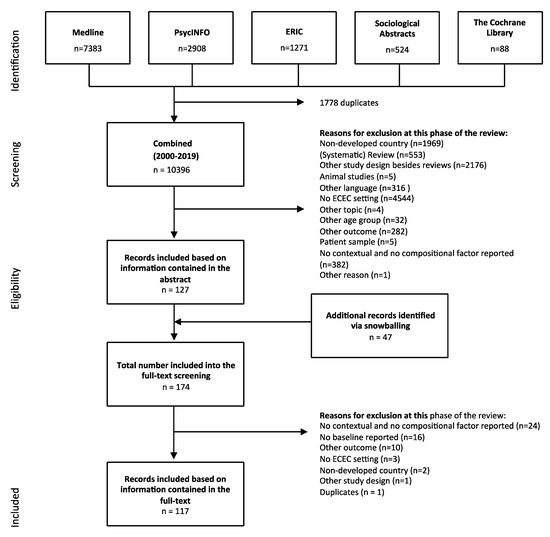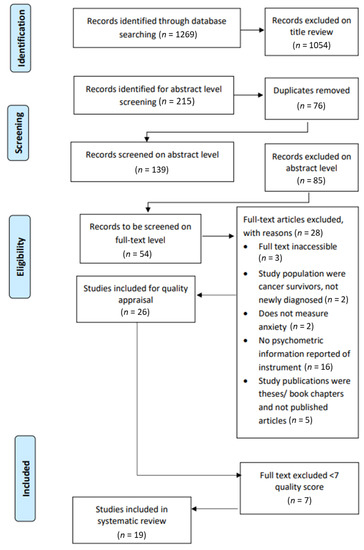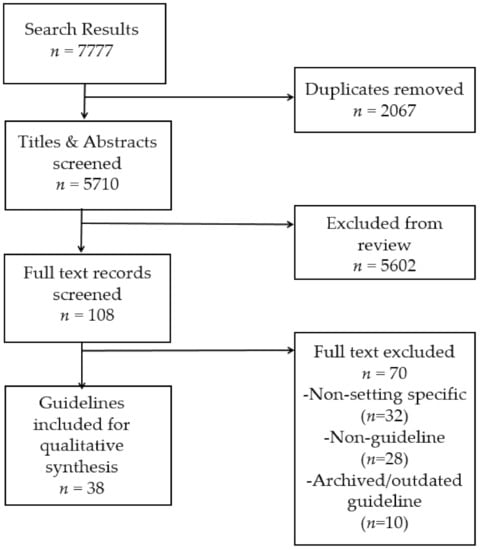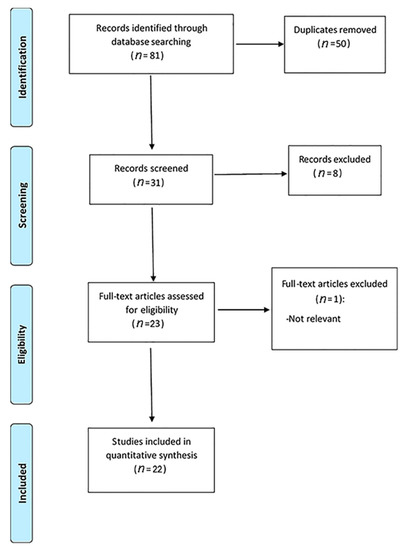Review Papers in Children's Health
(Closed)
Share This Topical Collection
Editor
 Dr. Jitse P. van Dijk
Dr. Jitse P. van Dijk
 Dr. Jitse P. van Dijk
Dr. Jitse P. van Dijk
E-Mail
Website
Collection Editor
1. Department of Community and Occupational Medicine, University Medical Center Groningen, University of Groningen, 9713 AV Groningen, The Netherlands
2. Olomouc University Social Health Institute, Palacky University Olomouc, 771 11 Olomouc, Czech Republic
3. Graduate School Kosice Institute for Society and Health, P.J. Safarik University in Kosice, 040 11 Kosice, Slovakia
Interests: mental health; adolescents; Roma health; religiosity/spirituality and health
Special Issues, Collections and Topics in MDPI journals
Topical Collection Information
Dear Colleagues,
The International Journal of Environmental Research and Public Health intends to initiate a series of review-only collections.
Under the Section “Children’s Health”, this Topical Collection aims to collect a set of high-quality review papers that highlight the most recent advances in the field of children’s health. We kindly encourage all research groups covering relevant areas within the Section’s scope to contribute up-to-date, full-length comprehensive reviews, highlighting the latest developments in their research field, or to invite relevant experts and colleagues to do so. This Topical Collection primarily publishes review papers by invitation, but will also publish reviews on topics of particular interest that do not overlap with current or recent Special Issues (https://0-www-mdpi-com.brum.beds.ac.uk/journal/ijerph/sections/Children_Health).
Distinguished researchers from all over the world will be invited to contribute to this collection. Potential contributors/invited authors are kindly requested to submit a tentative title and a short abstract to our Editorial Office ([email protected]) for pre-evaluation. Please note that selected full papers will still be subjected to a thorough and rigorous peer-review. All papers will be published on an ongoing basis.
Prof. Dr. Jitse P. van Dijk
Collection Editor
Manuscript Submission Information
Manuscripts should be submitted online at www.mdpi.com by registering and logging in to this website. Once you are registered, click here to go to the submission form. Manuscripts can be submitted until the deadline. All submissions that pass pre-check are peer-reviewed. Accepted papers will be published continuously in the journal (as soon as accepted) and will be listed together on the collection website. Research articles, review articles as well as short communications are invited. For planned papers, a title and short abstract (about 100 words) can be sent to the Editorial Office for announcement on this website.
Submitted manuscripts should not have been published previously, nor be under consideration for publication elsewhere (except conference proceedings papers). All manuscripts are thoroughly refereed through a single-blind peer-review process. A guide for authors and other relevant information for submission of manuscripts is available on the Instructions for Authors page. International Journal of Environmental Research and Public Health is an international peer-reviewed open access monthly journal published by MDPI.
Please visit the Instructions for Authors page before submitting a manuscript.
The Article Processing Charge (APC) for publication in this open access journal is 2500 CHF (Swiss Francs).
Submitted papers should be well formatted and use good English. Authors may use MDPI's
English editing service prior to publication or during author revisions.
Keywords
- review
- child or adolescent
- mental health
- physical health
- environmental health
- obesity, overweight
- health literacy
- school, education
- cultural capital
- socioeconomic status
Published Papers (15 papers)
Open AccessReview
Nonresponsive Parenting Feeding Styles and Practices and Risk of Overweight and Obesity among Chinese Children Living Outside Mainland China: An Integrative Review of the Literature
by
Qun Le, Mary L. Greaney and Ana Cristina Lindsay
Viewed by 1373
Abstract
Chinese immigrants are a fast-growing population group in many parts of the world. Childhood obesity is increasingly a public health problem among Chinese living outside mainland China. Evidence suggests that parenting feeding styles and practices critically influence children’s eating behaviors and risk of
[...] Read more.
Chinese immigrants are a fast-growing population group in many parts of the world. Childhood obesity is increasingly a public health problem among Chinese living outside mainland China. Evidence suggests that parenting feeding styles and practices critically influence children’s eating behaviors and risk of being overweight or obese. Therefore, the objectives of this review were to identify and synthesize the evidence from studies examining the associations between parenting feeding styles, feeding practices, and risk of overweight and obesity among children of Chinese parents outside mainland China. A systematic search of four electronic databases (CINAHL, Medline, PsycINFO, and PubMed) was conducted to identify peer-reviewed studies published in English between January 2000 and March 2022. Fifteen studies met the inclusion criteria and were included in the review. Findings of some of the reviewed studies showed that parenting feeding styles and practices varied according to children’s age, gender, weight, and parents’ acculturation levels. The two most identified parenting feeding styles were indulgent and authoritarian. Parents classified as having indulgent and/or authoritarian feeding styles reported using several feeding practices with unintended detrimental effects, such as pressuring children to eat and restricting or controlling child food intake (type and amount). Some of these feeding practices were associated with an increased risk of child overweight. The findings of this review provide important information that can inform the design interventions to address modifiable nonresponisve parental feeding practices such as pressuring, restricting, and controlling that meet the specific needs of Chinese parents and children outside mainland China.
Full article
►▼
Show Figures
Open AccessReview
Association between Maternal Anxiety and Children’s Problem Behaviors: A Systematic Review and Meta-Analysis
by
Zhanmei Song, Jie Huang, Tianqi Qiao, Jingfeng Yan, Xueying Zhang and Dengcheng Lu
Cited by 3 | Viewed by 2286
Abstract
Although numerous studies have found that maternal anxiety is a risk factor for the development of children’s problem behaviors, and there is a possible role of genes in the association between the two. And anxious mothers caring for their children can also affect
[...] Read more.
Although numerous studies have found that maternal anxiety is a risk factor for the development of children’s problem behaviors, and there is a possible role of genes in the association between the two. And anxious mothers caring for their children can also affect the development of children’s problem behaviors. However, there is also considerable evidence from studies that refute this view. This study used a meta-analysis to explore the relationship between maternal anxiety and preschool children’s problem behaviors. Through literature retrieval and selection, in terms of the criteria for inclusion in the meta-analysis, 88 independent effect sizes (34 studies, 295,032 participants) were picked out as meta-analysis units. The test for heterogeneity illustrated that there was significant heterogeneity in 88 independent effect sizes, while the random effects model was an appropriate model for the subsequent meta-analysis. The publication bias test indicated that the impact of publication bias was modest but the major findings remained valid. In addition, in terms of the tentative review analysis and research hypotheses, the random effects model was used as a meta-analysis model. The research revealed that maternal anxiety was significantly positively correlated with preschool children’s internalizing problem behaviors, externalizing problem behaviors, and overall problem behaviors. The moderating effect analysis showed that region and gender of the child affected the relationship between maternal anxiety and children’s internalizing problem behaviors and externalizing problem behaviors, and region, child’s age and gender, mother’s age, and education level affected maternal anxiety and preschool children’s problems behavioral relationship. Hence, these results affirmed the role of maternal anxiety and emphasized the need to pay attention to the demographic characteristics and cultural background of the subjects during the research process and consider the generalizability of the conclusions under different circumstances.
Full article
►▼
Show Figures
Open AccessReview
Shaping Pathways to Child Health: A Systematic Review of Street-Scale Interventions in City Streets
by
Adriana Ortegon-Sanchez, Laura Vaughan, Nicola Christie and Rosemary R. C. McEachan
Cited by 5 | Viewed by 2654
Abstract
Street-level built environment factors, for example, walking infrastructure, building density, availability of public transport, and proliferation of fast-food outlets can impact on health by influencing our ability to engage in healthy behaviour. Unhealthy environments are often clustered in deprived areas, thus interventions to
[...] Read more.
Street-level built environment factors, for example, walking infrastructure, building density, availability of public transport, and proliferation of fast-food outlets can impact on health by influencing our ability to engage in healthy behaviour. Unhealthy environments are often clustered in deprived areas, thus interventions to improve the built environments may improve health and reduce inequalities. The aim of this review was to identify whether street-level built environment interventions can improve children’s health in high income countries. A secondary aim was to describe key built environment elements targeted in interventions and research gaps. A systematic review of published literature was conducted by a multi-disciplinary team. Ten intervention papers were included. Physical activity or play was the only health outcome assessed. Most interventions described temporary changes including closure of streets to traffic (N = 6), which were mainly located in deprived neighbourhoods, or the addition of technology to ‘gamify’ active travel to school (N = 2). Two studies reported permanent changes to street design. There was limited evidence that closing streets to traffic was associated with increases in activity or play and inconclusive evidence with changes to street design and using technology to gamify active travel. Our ability to draw conclusions was hampered by inadequate study designs. Description of interventions was poor. Rigorous evaluation of built environment interventions remains challenging. We recommend a multi-disciplinary approach to evaluation, explicit reporting of built environment indicators targeted in interventions and offer solutions to others working in this area.
Full article
►▼
Show Figures
Open AccessReview
Potential Use of Edible Insects in Complementary Foods for Children: A Literature Review
by
Amanda Rodrigues Amorim Adegboye
Cited by 4 | Viewed by 2423
Abstract
Background: Childhood malnutrition is an important public health problem. Animal protein provides essential amino acids in a more adequate pattern than plant-based protein. However, the production of sufficient animal-sourced protein to feed the growing world population is a serious challenge. This review aims
[...] Read more.
Background: Childhood malnutrition is an important public health problem. Animal protein provides essential amino acids in a more adequate pattern than plant-based protein. However, the production of sufficient animal-sourced protein to feed the growing world population is a serious challenge. This review aims to explore the evidence on the use of edible insects as an alternative source of protein and micronutrients in complementary foods for children and their potential to address childhood malnutrition. Methods: Searches were conducted in two electronic databases PubMed and Cochrane. The reference lists of included studies were also searched. Results: Twelve studies were included in this review. All insect-enriched formulations (e.g., biscuits, cereals, porridge, paste, etc.) exceeded the daily recommended amount of protein and fat for children’s complementary foods and showed good acceptability. Only two studies assessed the efficacy of insect-enriched foods on nutritional indicators and found no effect on the reduction of stunting and wasting. However, one study found improvements in the haemoglobin levels and fewer cases of anaemia in the intervention group. Conclusions: Insect-enriched complementary foods for children are safe, acceptable and have the potential to tackle micronutrient deficiencies. More studies are needed to examine their effect on nutritional status in children.
Full article
►▼
Show Figures
Open AccessEditor’s ChoiceSystematic Review
Experiential Learning Interventions and Healthy Eating Outcomes in Children: A Systematic Literature Review
by
Sumantla D. Varman, Dylan P. Cliff, Rachel A. Jones, Megan L. Hammersley, Zhiguang Zhang, Karen Charlton and Bridget Kelly
Cited by 21 | Viewed by 5718
Abstract
Experiential learning is the process where learners create meaning from direct experience. This systematic review aimed to examine the effects of experiential learning activities on dietary outcomes (knowledge, attitudes, behaviors) in children. Four databases: Education Research Complete, Scopus, Web of Science and PsychINFO
[...] Read more.
Experiential learning is the process where learners create meaning from direct experience. This systematic review aimed to examine the effects of experiential learning activities on dietary outcomes (knowledge, attitudes, behaviors) in children. Four databases: Education Research Complete, Scopus, Web of Science and PsychINFO were searched from database inception to 2020. Eligible studies included children 0–12 years, assessed effect of experiential learning on outcomes of interest compared to non-experiential learning and were open to any setting. The quality of studies was assessed using the revised Cochrane risk of bias tool by two independent reviewers and effect size was calculated on each outcome. Nineteen studies were conducted in primary school, six in pre-school and one in an outside-of-school setting and used nine types of experiential learning strategies. Cooking, taste-testing, games, role-playing, and gardening were effective in improving nutrition outcomes in primary school children. Sensory evaluation, games, creative arts, and storybooks were effective for preschool children. Multiple strategies involving parents, and short/intense strategies are useful for intervention success. Experiential learning is a useful strategy to improve children’s knowledge, attitudes, and behaviors towards healthy eating. Fewer studies in pre-school and outside of school settings and high risk of bias may limit the generalizability and strength of the findings.
Full article
►▼
Show Figures
Open AccessReview
Measuring the Built Environment in Studies of Child Health—A Meta-Narrative Review of Associations
by
Adriana Ortegon-Sanchez, Rosemary R. C. McEachan, Alexandra Albert, Chris Cartwright, Nicola Christie, Ashley Dhanani, Shahid Islam, Marcella Ucci and Laura Vaughan
Cited by 15 | Viewed by 5376
Abstract
Although the built environment (BE) is important for children’s health, there is little consensus about which features are most important due to differences in measurement and outcomes across disciplines. This meta-narrative review was undertaken by a multi-disciplinary team of researchers to summarise ways
[...] Read more.
Although the built environment (BE) is important for children’s health, there is little consensus about which features are most important due to differences in measurement and outcomes across disciplines. This meta-narrative review was undertaken by a multi-disciplinary team of researchers to summarise ways in which the BE is measured, and how this links to children’s health. A structured search of four databases across the relevant disciplines retrieved 108 relevant references. The most commonly addressed health-related outcomes were active travel, physical activity and play, and obesity. Many studies used objective (GIS and street audits) or standardised subjective (perceived) measurements of the BE. However, there was a wide variety, and sometimes inconsistency, in their definition and use. There were clear associations between the BE and children’s health. Objective physical activity and self-reported active travel, or obesity, were positively associated with higher street connectivity or walkability measures, while self-reported physical activity and play had the strongest association with reduced street connectivity, indicated by quieter, one-way streets. Despite the high heterogeneity found in BE measures and health outcomes, the meta-narrative approach enabled us to identify ten BE categories that are likely to support children’s health and be protective against some non-communicable disease risk factors. Future research should implement consistent BE measures to ensure key features are explored. A systems approach will be particularly relevant for addressing place-based health inequalities, given potential unintended health consequences of making changes to the BE.
Full article
►▼
Show Figures
Open AccessReview
Indicators to Assess Physical Health of Children and Adolescents in Activity Research—A Scoping Review
by
Simon Kolb, Alexander Burchartz, Doris Oriwol, Steffen C. E. Schmidt, Alexander Woll and Claudia Niessner
Cited by 5 | Viewed by 2957
Abstract
Sufficient physical activity can help promote and maintain health, while its lack can jeopardize it. Since health and physical activity lay their foundation for later life in childhood and adolescence, it is important to examine this relationship from the beginning. Therefore, this scoping
[...] Read more.
Sufficient physical activity can help promote and maintain health, while its lack can jeopardize it. Since health and physical activity lay their foundation for later life in childhood and adolescence, it is important to examine this relationship from the beginning. Therefore, this scoping review aims to provide an overview of physical health indicators in children and adolescents in research on the effects of physical activity and sedentary behavior. We identified the indicators used to quantify or assess physical health and summarized the methods used to measure these indicators. We systematically searched Scopus, Pubmed, and Web of Science databases for systematic reviews. The search yielded 4595 records from which 32 records were included in the review. The measurements for physical health reported in the reviews contained measures of body composition, cardiometabolic biomarkers, physical fitness, harm/injury, or bone health. Body composition was the most used indicator to assess and evaluate physical health in children, whereas information on harm and injury was barely available. In future research longitudinal studies are mandatory to focus on the prospective relationships between physical activity or sedentary behavior, and physical health.
Full article
►▼
Show Figures
Open AccessReview
A Systematic Review of Characteristics Associated with COVID-19 in Children with Typical Presentation and with Multisystem Inflammatory Syndrome
by
Jeffrey Kornitzer, Jacklyn Johnson, Max Yang, Keith W. Pecor, Nicholas Cohen, Carolyn Jiang and Xue Ming
Cited by 16 | Viewed by 3111
Abstract
Setting off a global pandemic, coronavirus disease 2019 (COVID-19) has been marked by a heterogeneous clinical presentation that runs the gamut from asymptomatic to severe and fatal. Although less lethal in children than adults, COVID-19 has nonetheless afflicted the pediatric population. This systematic
[...] Read more.
Setting off a global pandemic, coronavirus disease 2019 (COVID-19) has been marked by a heterogeneous clinical presentation that runs the gamut from asymptomatic to severe and fatal. Although less lethal in children than adults, COVID-19 has nonetheless afflicted the pediatric population. This systematic review used clinical information from published literature to assess the spectrum of COVID-19 presentation in children, with special emphasis on characteristics associated with multisystem inflammatory syndrome (MIS-C). An electronic literature search for English and Chinese language articles in COVIDSeer, MEDLINE, and PubMed from 1 January 2020 through 1 March 2021 returned 579 records, of which 54 were included for full evaluation. Out of the total 4811 patients, 543 (11.29%) exhibited MIS-C. The most common symptoms across all children were fever and sore throat. Children presenting with MIS-C were less likely to exhibit sore throat and respiratory symptoms (i.e., cough, shortness of breath) compared to children without MIS-C. Inflammatory (e.g., rash, fever, and weakness) and gastrointestinal (e.g., nausea/vomiting and diarrhea) symptoms were present to a greater extent in children with both COVID-19 and MIS-C, suggesting that children testing positive for COVID-19 and exhibiting such symptoms should be evaluated for MIS-C.
Full article
►▼
Show Figures
Open AccessReview
Health Inequalities in Children and Adolescents: A Scoping Review of the Mediating and Moderating Effects of Family Characteristics
by
Miriam Blume, Petra Rattay, Stephanie Hoffmann, Jacob Spallek, Lydia Sander, Raphael Herr, Matthias Richter, Irene Moor, Nico Dragano, Claudia Pischke, Iryna Iashchenko, Claudia Hövener and Benjamin Wachtler
Cited by 8 | Viewed by 4117
Abstract
This scoping review systematically mapped evidence of the mediating and moderating effects of family characteristics on health inequalities in school-aged children and adolescents (6–18 years) in countries with developed economies in Europe and North America. We conducted a systematic scoping review following the
[...] Read more.
This scoping review systematically mapped evidence of the mediating and moderating effects of family characteristics on health inequalities in school-aged children and adolescents (6–18 years) in countries with developed economies in Europe and North America. We conducted a systematic scoping review following the PRISMA extension for Scoping Reviews recommendations. We searched the PubMed, PsycINFO and Scopus databases. Two reviewers independently screened titles, abstracts and full texts. Evidence was synthesized narratively. Of the 12,403 records initially identified, 50 articles were included in the synthesis. The included studies were conducted in the United States (
n = 27), Europe (
n = 18), Canada (
n = 3), or in multiple countries combined (
n = 2). We found that mental health was the most frequently assessed health outcome. The included studies reported that different family characteristics mediated or moderated health inequalities. Parental mental health, parenting practices, and parent-child-relationships were most frequently examined, and were found to be important mediating or moderating factors. In addition, family conflict and distress were relevant family characteristics. Future research should integrate additional health outcomes besides mental health, and attempt to integrate the complexity of families. The family characteristics identified in this review represent potential starting points for reducing health inequalities in childhood and adolescence.
Full article
►▼
Show Figures
Open AccessReview
Roles of the Maternal and Child Health Handbook and Other Home-Based Records on Newborn and Child Health: A Systematic Review
by
Rogie Royce Carandang, Jennifer Lisa Sakamoto, Mika Kondo Kunieda, Akira Shibanuma, Ekaterina Yarotskaya, Milana Basargina and Masamine Jimba
Cited by 8 | Viewed by 4722
Abstract
Home-based records are paper or electronic records retained and used by mothers or caregivers to document the health services received for maternal, newborn, and child health. Little has been studied about the roles of these records on newborn and child health outcomes. Hence,
[...] Read more.
Home-based records are paper or electronic records retained and used by mothers or caregivers to document the health services received for maternal, newborn, and child health. Little has been studied about the roles of these records on newborn and child health outcomes. Hence, we collated and summarized evidence concerning the roles of home-based records in improving newborn and child health. We conducted a systematic search in several databases: MEDLINE, Web of Science, CINAHL, PsycINFO, PsycARTICLES, Academic Search Complete, SocINDEX, CENTRAL, DARE, NHS EED, HTA, J-STAGE, Ichushi, and gray literature. We included original research articles of all study designs published in English or Japanese until January 2020. Owing to heterogeneity across the outcomes of included studies, we conducted a narrative synthesis. We included 55 studies (23 in Japanese) among 14,017 identified articles. We identified the following roles of home-based records on newborn and child health: promoted newborn/childcare seeking, improved knowledge and practices of newborn/childcare, encouraged home care for childhood illnesses, reduced child mortality and morbidity, and facilitated continuum of care. We observed a mixed effect on age-appropriate immunization (e.g., DTP3 completion) and no effect on the practice of immediate breastfeeding and prevention of perinatal mortality and morbidity. The findings highlighted the effectiveness and usefulness of home-based records to improve newborn and child health outcomes. However, only a few studies were available for each outcome category, limiting the certainty of evidence provided in this review. Therefore, we recommend further studies to explore the benefits of home-based records on improving newborn and child health.
Full article
►▼
Show Figures
Open AccessReview
The Effects of Active Video Games on Health-Related Physical Fitness and Motor Competence in Children and Adolescents with Healthy Weight: A Systematic Review and Meta-Analysis
by
Cristina Comeras-Chueca, Jorge Marin-Puyalto, Angel Matute-Llorente, German Vicente-Rodriguez, Jose A. Casajus and Alex Gonzalez-Aguero
Cited by 9 | Viewed by 4200
Abstract
(1) Background: Poor levels of physical fitness and motor skills are problems for today’s children. Active video games (AVG) could be an attractive strategy to help address them. The aim was to investigate the effects of AVG on health-related physical fitness and motor
[...] Read more.
(1) Background: Poor levels of physical fitness and motor skills are problems for today’s children. Active video games (AVG) could be an attractive strategy to help address them. The aim was to investigate the effects of AVG on health-related physical fitness and motor competence in children and adolescents with healthy weight. (2) Methods: Randomized and non-randomized controlled trials investigating the effects of AVG programs on health-related physical fitness and motor competence were included. Two different quality assessment tools were used to measure the risk of bias. Twenty articles met the inclusion criteria and the variables of interest were body mass index (BMI), body fat, cardiorespiratory fitness (CRF), muscular fitness and motor competence. (3) Results: AVG interventions seem to have benefits in BMI when lasting longer than 18 weeks (SMD, −0.590; 95% IC, −1.071, −0.108) and in CRF (SMD, 0.438; 95% IC, 0.022, 0.855). AVG seems to be a promising tool to improve muscular fitness and motor competence but the effects are still unclear due to the lack of evidence. (4) Conclusions: AVG seem to be an effective tool for improving some components of health-related physical fitness and motor competence in healthy-weight children and adolescents, but the effect on some fitness components needs further research. Therefore, AVG may be included as a strategy to improve health.
Full article
►▼
Show Figures
Open AccessReview
Which Meso-Level Characteristics of Early Childhood Education and Care Centers Are Associated with Health, Health Behavior, and Well-Being of Young Children? Findings of a Scoping Review
by
Raphael M. Herr, Katharina Diehl, Sven Schneider, Nina Osenbruegge, Nicole Memmer, Steffi Sachse, Stephanie Hoffmann, Benjamin Wachtler, Max Herke, Claudia R. Pischke, Anna Novelli and Jennifer Hilger-Kolb
Cited by 8 | Viewed by 3813
Abstract
Characteristics of early childhood education and care (ECEC) centers might be relevant for children’s health. This scoping review aims to provide an overview of the association between meso-level characteristics (MLCs) of ECEC centers with children’s health, health behavior, and wellbeing. Five databases were
[...] Read more.
Characteristics of early childhood education and care (ECEC) centers might be relevant for children’s health. This scoping review aims to provide an overview of the association between meso-level characteristics (MLCs) of ECEC centers with children’s health, health behavior, and wellbeing. Five databases were searched for quantitative and qualitative research articles published in English or German since 1 January 2000 on health, health behavior, and wellbeing of children aged 0 to 6 years considering MLCs of ECEC centers. Two authors screened 10,396 potentially eligible manuscripts and identified 117 papers, including 3077 examinations of the association between MLCs and children’s health indicators (Kappas > 0.91). Five categories of MLCs were identified: (1) structural characteristics, (2) equipment/furnishings, (3) location, (4) facilities/environment, (5) culture/activities/policies/practices, and 6) staff. Only very few studies found an association of MLCs with body weight/obesity, and general health and wellbeing. Especially physical activity and mental health were related to MLCs. In general, the location (rural vs. urban, neighborhood status) seemed to be a relevant health aspect. MLCs of ECEC centers appeared relevant for child health indicators to different degrees. Future research should focus on these associations, in detail, to identify concrete ECEC indicators that can support health promotion in early childhood.
Full article
►▼
Show Figures
Open AccessReview
A Systematic Review of Self-Report Instruments for the Measurement of Anxiety in Hospitalized Children with Cancer
by
Gomolemo Mahakwe, Ensa Johnson, Katarina Karlsson and Stefan Nilsson
Cited by 14 | Viewed by 4853
Abstract
Anxiety has been identified as one of the most severe and long-lasting symptoms experienced by hospitalized children with cancer. Self-reports are especially important for documenting emotional and abstract concepts, such as anxiety. Children may not always be able to communicate their symptoms due
[...] Read more.
Anxiety has been identified as one of the most severe and long-lasting symptoms experienced by hospitalized children with cancer. Self-reports are especially important for documenting emotional and abstract concepts, such as anxiety. Children may not always be able to communicate their symptoms due to language difficulties, a lack of developmental language skills, or the severity of their illness. Instruments with sufficient psychometric quality and pictorial support may address this communication challenge. The purpose of this review was to systematically search the published literature and identify validated and reliable self-report instruments available for children aged 5–18 years to use in the assessment of their anxiety to ensure they receive appropriate anxiety-relief intervention in hospital. What validated self-report instruments can children with cancer use to self-report anxiety in the hospital setting? Which of these instruments offer pictorial support? Eight instruments were identified, but most of the instruments lacked pictorial support. The Visual Analogue Scale (VAS) and Pediatric Quality of Life (PedsQL™) 3.0 Brain Tumor Module and Cancer Module proved to be useful in hospitalized children with cancer, as they provide pictorial support. It is recommended that faces or symbols be used along with the VAS, as pictures are easily understood by younger children. Future studies could include the adaptation of existing instruments in digital e-health tools.
Full article
►▼
Show Figures
Open AccessReview
Obesity Prevention within the Early Childhood Education and Care Setting: A Systematic Review of Dietary Behavior and Physical Activity Policies and Guidelines in High Income Countries
by
Jacklyn Kay Jackson, Jannah Jones, Hanh Nguyen, Isabella Davies, Melanie Lum, Alice Grady and Sze Lin Yoong
Cited by 24 | Viewed by 8040
Abstract
As a strategy for early childhood obesity prevention, a variety of dietary behavior and physical activity policies and guidelines published by leading health agencies and early childhood education and care (ECEC) licensing and accreditation bodies exist. Given the potential diversity in recommendations from
[...] Read more.
As a strategy for early childhood obesity prevention, a variety of dietary behavior and physical activity policies and guidelines published by leading health agencies and early childhood education and care (ECEC) licensing and accreditation bodies exist. Given the potential diversity in recommendations from these policies, this narrative review sought to synthesize, appraise and describe the various policies and guidelines made by organizational and professional bodies to highlight consistent recommendations and identify opportunities to strengthen such policies. An electronic bibliographic search of seven online databases and grey literature sources was undertaken. Records were included if they were policies or guidelines with specific recommendations addressing dietary behavior and/or physical activity practice implementation within the ECEC setting; included children aged >12 months and <6 years and were developed for high income countries. Recommended dietary behavior and physical activity policies and practices were synthesized into broad themes using the Analysis Grid for Environments Linked to Obesity framework, and the quality of included guidelines appraised. Our search identified 38 eligible publications mostly from the US and Australia. Identified guidelines were largely consistent in their recommendation and frequently addressed the physical and sociocultural environment and were well-aligned with research evidence. Broader consideration of policy and economic environments may be needed to increase the impact of such policies and guidelines within the ECEC setting.
Full article
►▼
Show Figures
Open AccessReview
The Impact of Overweight and Obesity on Plantar Pressure in Children and Adolescents: A Systematic Review
by
Liliana Catan, Elena Amaricai, Roxana Ramona Onofrei, Calin Marius Popoiu, Emil Radu Iacob, Corina Maria Stanciulescu, Simona Cerbu, Delia Ioana Horhat and Oana Suciu
Cited by 19 | Viewed by 3444
Abstract
We aimed to synthesise the results of previous studies addressing the impact of overweight and obesity on plantar pressure in children and adolescents. An electronic search of scientific literature was conducted using PubMed, Cochrane and Scopus database, with keywords: “plantar pressure” AND “children”
[...] Read more.
We aimed to synthesise the results of previous studies addressing the impact of overweight and obesity on plantar pressure in children and adolescents. An electronic search of scientific literature was conducted using PubMed, Cochrane and Scopus database, with keywords: “plantar pressure” AND “children” AND “obesity”; “plantar pressure” AND “adolescents” AND “obesity”, “plantar pressure” AND “children” AND “overweight”, “plantar pressure” AND “adolescents” AND “overweight”. Twenty-two articles were included in the review and the following data were recorded: authors, publication year, type of technology (systems, software) for the determination of plantar pressure, study characteristics. Most of the articles used dynamic plantar pressure determination with only four using static plantar pressure measurement. Using ultrasonography with static plantar pressure determination, the correlation between structural and functional changes in the feet of obese children. In overweight and obese children and adolescents, important findings were recorded: higher contact area, increased maximum force beneath the lateral and medial forefoot, increased pressure–time integral beneath the midfoot and 2nd–5th metatarsal regions. Significantly increased foot axis angle and significantly flatter feet were observed in obese subjects in comparison to their normal-weight counterparts. The obese children presented increased midfoot fat pad thickness, with decreased sensitivity of the whole foot and midfoot.
Full article
►▼
Show Figures





